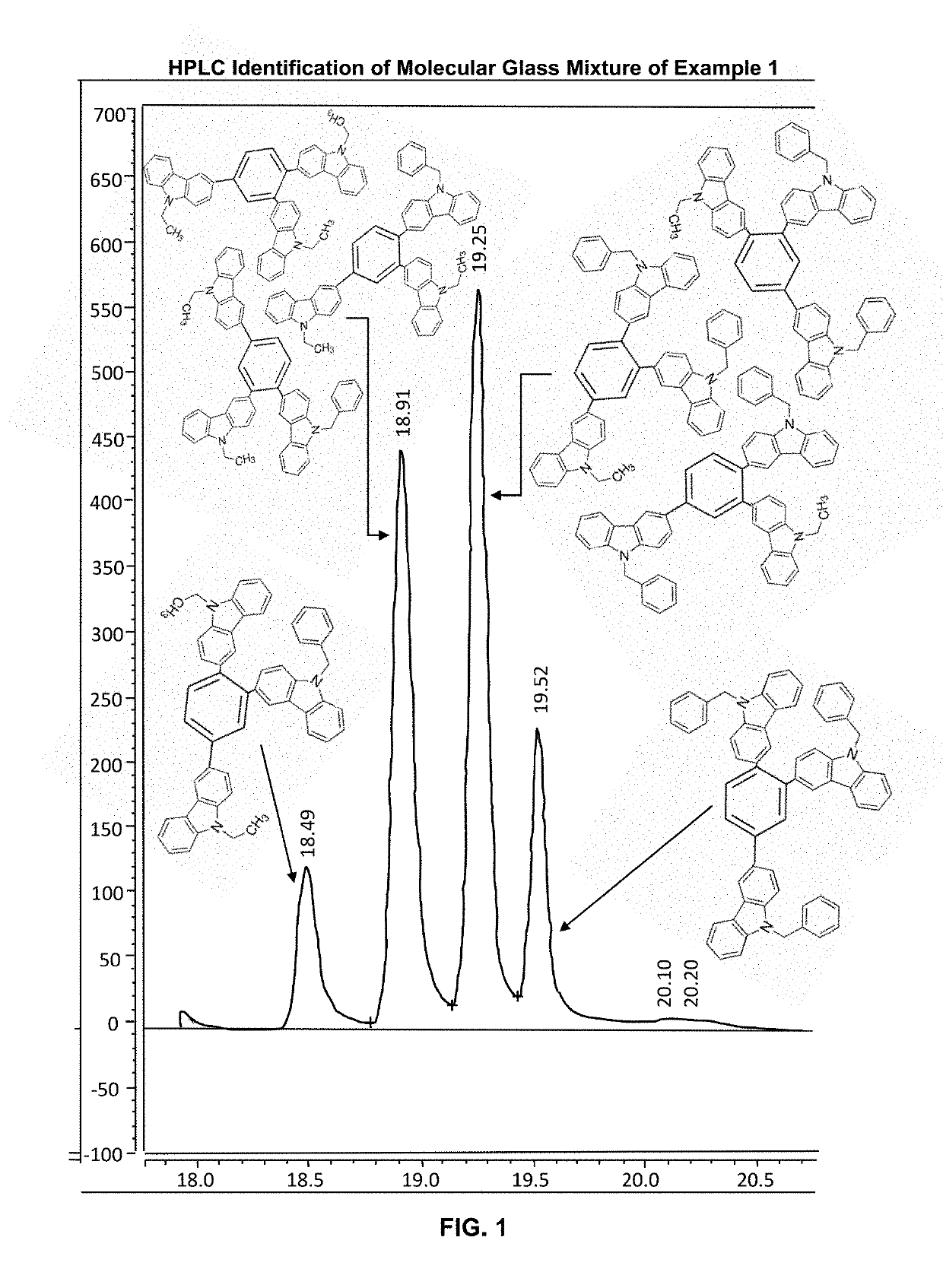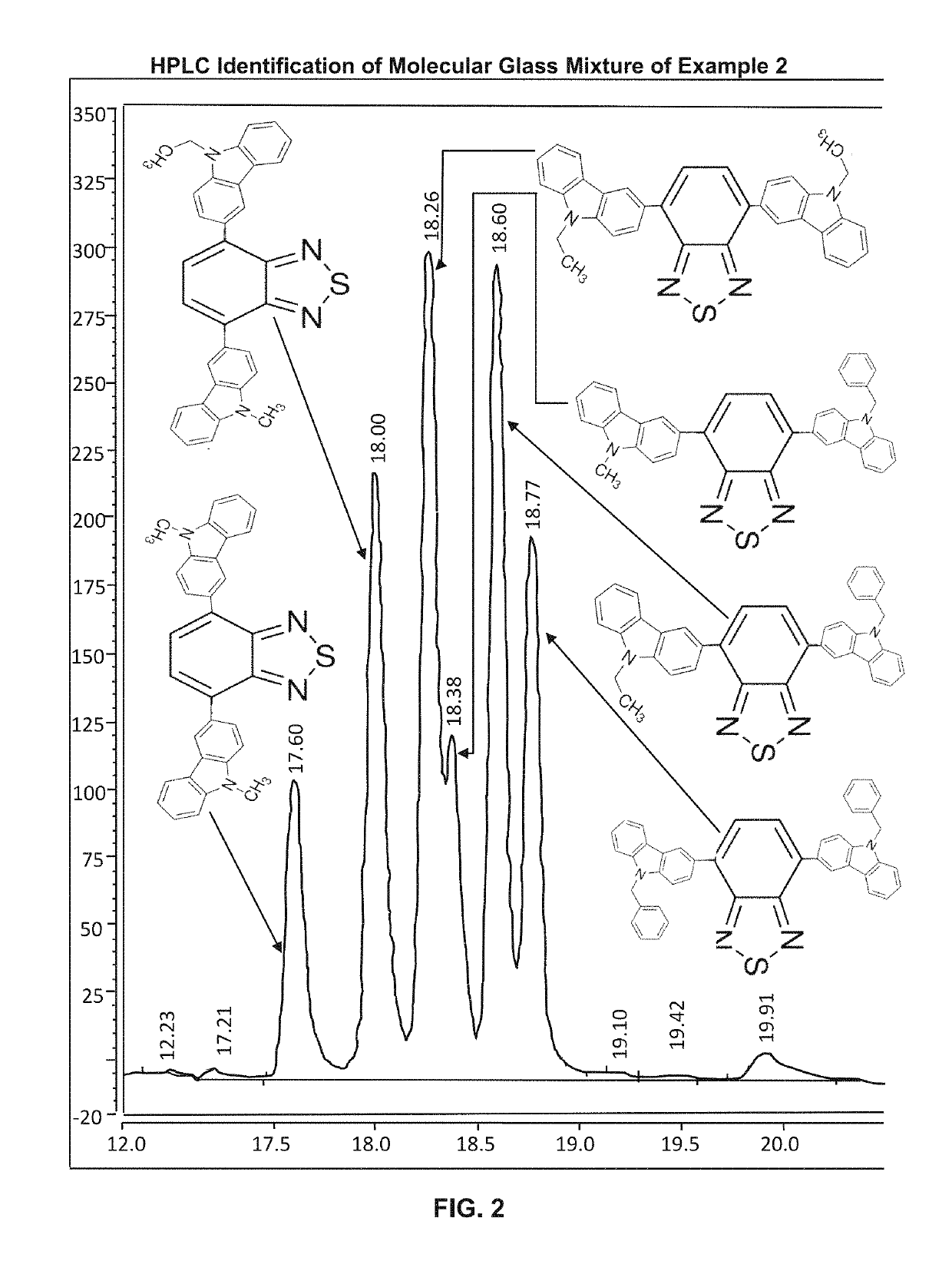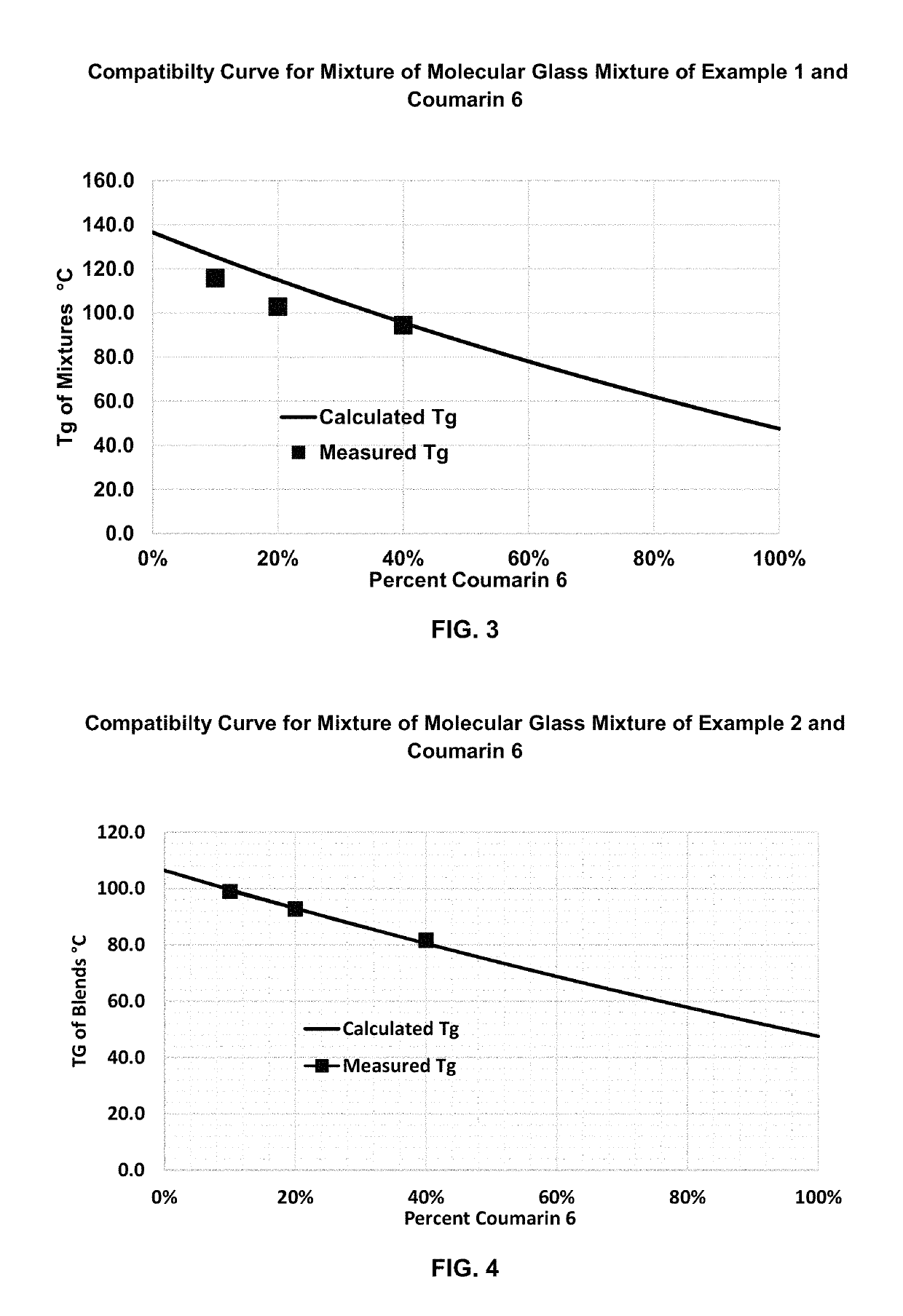Non-crystallizable pi-conjugated molecular glass mixtures, charge transporting molecular glass mixtures, luminescent molecular glass mixtures, or combinations thereof for organic light emitting diodes and other organic electronics and photonics applications
a technology of non-crystallizable molecular glass and molecular glass mixture, which is applied in the direction of luminescent composition, organic semiconductor devices, chemistry apparatus and processes, etc., can solve the problems of limiting device longevity, degrading the performance of the device comprising the non-equilibrium molecular glass, and crystallization remains a problem to be solved, etc. , to achieve the effect of good film forming properties, low melt viscosity and large positiv
- Summary
- Abstract
- Description
- Claims
- Application Information
AI Technical Summary
Benefits of technology
Problems solved by technology
Method used
Image
Examples
example 1
[0317]
[0318]316 milligrams (0.825 mill mole (mmol)) 9-benzylcarbazole-3-boronic acid pinacol ester, 253 mg (0.825 mmol) 9-methylcarbazole-3-boronic acid pinacol ester, and 35 mg XPhos Pd G2 (3 mole %) were added to a Schlenk flask, which was then purged under nitrogen. 63 μL (0.5 mmol) 1,2,4-trichlorobenzene, 3 mL dry THF, and 6 mL degassed 0.5M K3PO4 were sequentially added to the reaction flask under nitrogen. The flask was sealed, heated to 40° C. and stirred overnight. Three extracts of 10 milliliters diethyl ether are collected and filtered twice through silica gel. The solution is evaporated with the rotovap and the resulting oil is dissolved in a small amount of dichloromethane and crashed out of 150 milliliter heptane. The white precipitate is filtered and dried on vacuum. The 8 components of the mixture are shown below
[0319]
example 2
[0320]
[0321]294 mg (1.0 mmol) 4,7-dibromobenzo[c]-1,2,5-thiadiazole, 215 mg (0.7 mmol) 9-methylcarbazole-3-boronic acid pinacol ester, 225 mg (0.7 mmol) 9-ethylcarbazole-3-boronic acid pinacol ester, 268 mg (0.7 mmol) 9-benzylcarbazole-3-boronic acid pinacol ester, and 47 mg XPhos Pd G2 (3 mole %) were added to a Schlenk flask, which was then purged under nitrogen. 3 mL dry THF and 6 mL degassed 0.5M K3PO4 were added to the reaction flask under nitrogen. The flask was sealed, heated to 40° C. and stirred overnight. 3 extracts of 10 mL diethyl ether were collected and filtered twice through silica gel. The solution was evaporated with the rotovap and the resulting oil was dissolved in a small amount of dichloromethane and crashed out of 150 mL heptane. The orange precipitate was filtered and dried on vacuum. The structures of the components are shown below:
[0322]
Example 3. High Pressure Performance Liquid Chromatography (HPLC) Assay of Molecular Glass Mixture Example 1
[0323]The sampl...
example 3
sure Performance Liquid Chromatography (HPLC) Assay of Molecular Glass Mixture Example 2
[0324]The procedure of Example 3 was used. FIG. 2 shows six major peaks. The first peak at retention time 17.6 min. is associated with the di (9-methyl carbazole) component. The peak at retention time 18.0 min is associated with 9-methylcarbazole, 9-ethyl carbazole component. The peak at 18.26 min. is associated with the di-(9-ethyl carbazole) component. The peak at 18.38 min is associated with the 9-methyl carbazole, 9-benzyl carbazole component. The peak at 18.60 is associated with the 9-ethyl carbazole, 9-benzyl carbazole component. The last major peak at retention time 18.77 min is associated with the di (9-benzyl carbazole) component. The six major peaks account for 96.82% of peak areas (based on absorption response at 254 nm).
PUM
| Property | Measurement | Unit |
|---|---|---|
| glass-transition temperature | aaaaa | aaaaa |
| glass-transition temperature | aaaaa | aaaaa |
| Tg | aaaaa | aaaaa |
Abstract
Description
Claims
Application Information
 Login to View More
Login to View More - R&D
- Intellectual Property
- Life Sciences
- Materials
- Tech Scout
- Unparalleled Data Quality
- Higher Quality Content
- 60% Fewer Hallucinations
Browse by: Latest US Patents, China's latest patents, Technical Efficacy Thesaurus, Application Domain, Technology Topic, Popular Technical Reports.
© 2025 PatSnap. All rights reserved.Legal|Privacy policy|Modern Slavery Act Transparency Statement|Sitemap|About US| Contact US: help@patsnap.com



